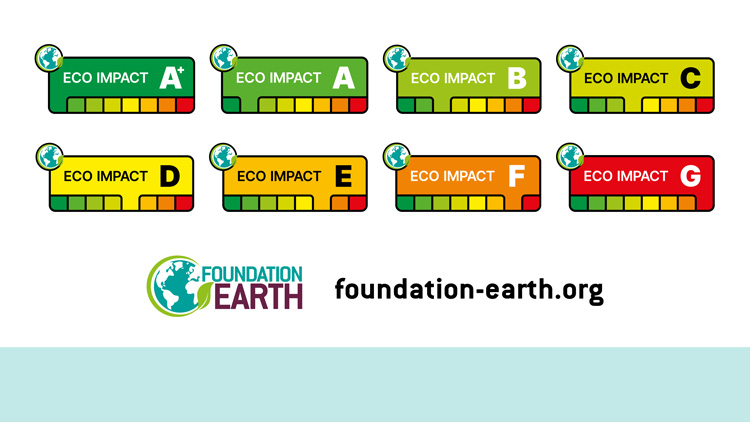Traffic light style eco-labelling solution to be trialled in UK
A selection of major brands and supermarkets like Co-op, Sainsbury’s, Abel & Cole and Costa are joining the government-backed Foundation Earth programme.
A new traffic light food labelling system, designed to help consumers make more environmentally conscious shopping decisions, will be trialled in the UK this autumn.
The eco-labelling scheme has been developed by Foundation Earth, a new non-profit backed by the UK government and several food giants like Nestlé, Marks & Spencer, Sainsbury’s and the Co-op.

Avoiding information overload
Eco-labelling refers to the use of on-pack graphics to help consumers understand how good or bad their food choices are for the environment.
Earlier this year, Design Week covered the topic of eco-labelling and the unique design challenge it presents for packaging.
The sheer amount of information that is needed to produce a graphic representative of food’s impact on the environment means designers and the brands they work for need to balance between accuracy and ease of communication.
On the topic, Thomas Matthews founding director Sophie Thomas said: “Of course, from an environmental perspective the more information the better, but there is a line past which things become confusing for shoppers.”
“Drive consumer change”
The Foundation Earth scheme will use a front-of-pack graphic to denote how environmentally friendly a product is.
Products involved in the trial will fall somewhere on the scale between A+ and G, representing the least impactful on the environment and the most impactful respectively.
These grades are supported with a traffic light-style colour system, which runs from green, through yellow and orange, to red.
A spokesperson for Foundation Earth says the labelling system was informed by “extensive research” of labelling systems found around the world and consumer behaviour.
“They were then refined to which impacts to share, which is where the grade & coloured scale were introduced,” they say. “This was then further refined with on pack design test after which the labels were optimised for digital delivery into the simple, clear eco impact score we have today.”

Farming, processing, packaging and transport
The Foundation’s pilot launch in Autumn 2021 will use a traffic-light style system developed by Mondra, using data from the academic paper by Joseph Poore & Thomas Nemecek (2018).
A total of four different factors are considered for each food product’s grade. These are farming, processing, packaging and transport.
The actual weighting for these factors comes from measuring things like the amount of water used to grow or manufacture the product, how much water pollution is involved, how it impacts biodiversity and how much carbon is produced.
“A complete product life cycle”
Foundation Earth’s pilot will run in parallel to an “intensive nine-month development programme” supported by Nestlé, which will combine the “Mondra method” with a system devised by an EU-funded EIT Food consortium from Belgium’s Leuven University and Spanish research agency AZTI.
Both the Mondra and EIT systems are unique, according to Foundation Earth, because they allow two products of the same type to be compared on their individual merits.
Judgements include a consideration of “a complete product life cycle”, as opposed to “simply using secondary data to estimate the environmental impact of an entire product group”, the organisation says.
Following this trial, Foundation Earth says its R&D programme will produce an optimum and fully automated system for use across the UK and EU by autumn 2022.






Won’t this require anything not printed in full colour (say a Coke can) to use more colour and therefore be less efficient? Could’ve just numbered it.